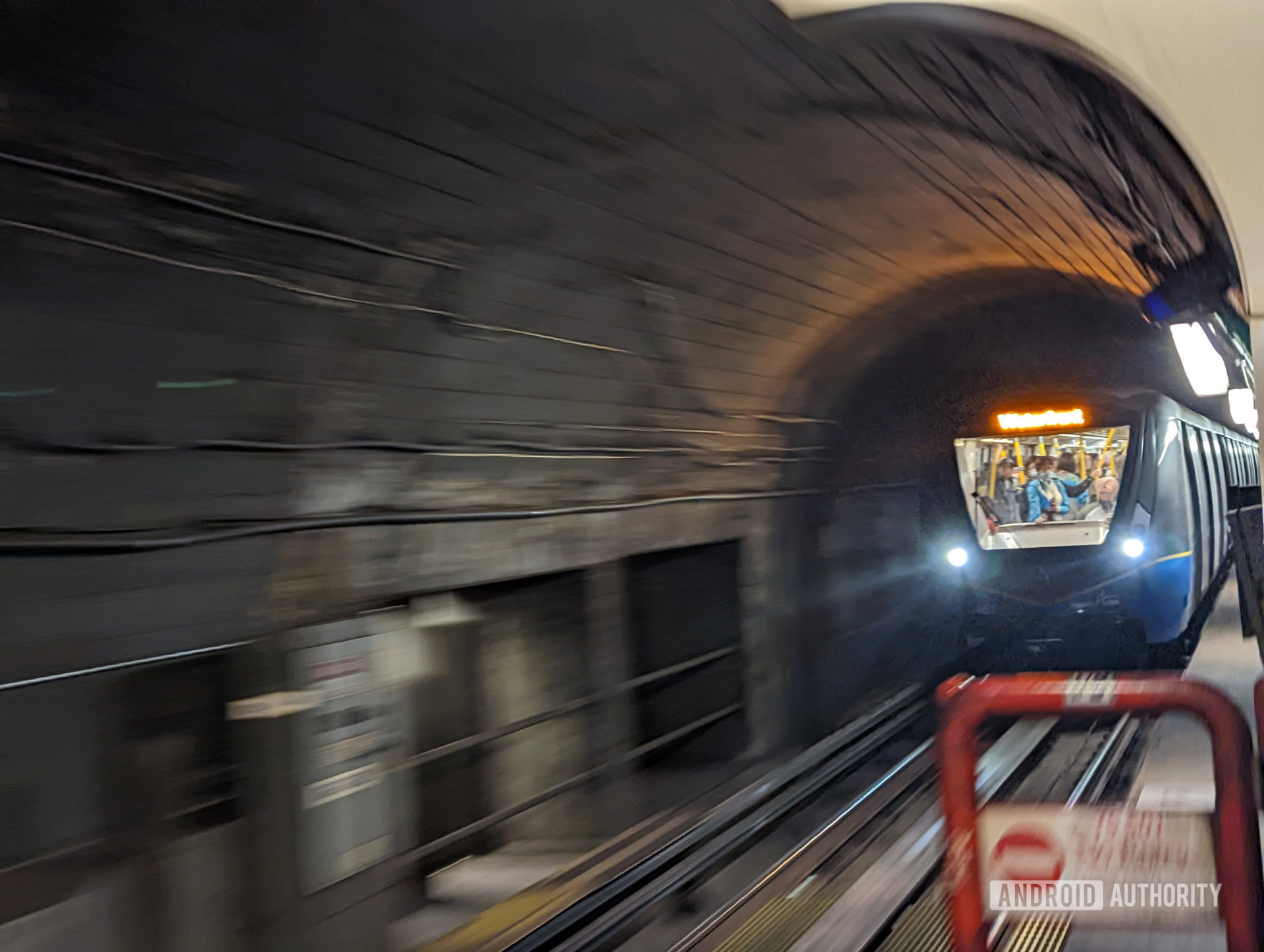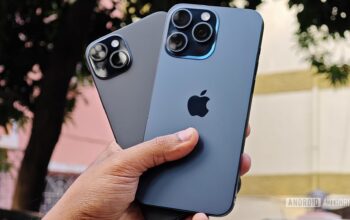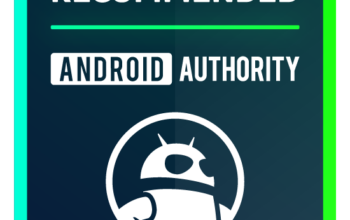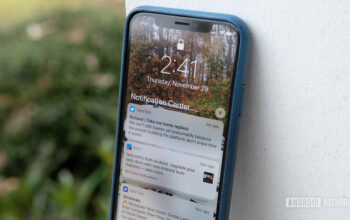Rita El Khoury / Android Authority
Google’s Pixel phones have stood out for their camera prowess since the very beginning. Fast-forward to 2023 and the Pixel 8 phones still offer a fantastic camera experience.
Not every Pixel camera feature is a winner, though; some are simply better than others. With that in mind, we thought it would be a good idea to rank Google’s Pixel camera features from worst to best.
Before we start the list, it’s worth noting that we skipped the portrait, slow-motion, and timelapse modes as these are staples on virtually all smartphones today. We also skipped the PhotoSphere option after Google ditched it this year.
1. HDR+
Hadlee Simons / Android Authority
Was there ever any doubt that Google’s take on HDR photography wouldn’t be highly ranked? HDR+ debuted back in 2013 on the Nexus 5, and it’s been a staple on Google phones ever since. In fact, HDR+ has been used by default for photos ever since 2016’s Pixel phones.
The mode originally worked by snapping a burst of short exposures and combining these frames into one HDR image. This also resulted in reduced blur and noise, helping to deliver an even better picture. Today’s HDR+ on modern Pixels works by capturing several short exposures plus a long exposure frame to further cut down on noise.
Either way, HDR+ and associated multi-frame processing techniques now serve as foundational technologies for the best camera phones. In fact, even the Pixel’s Night Sight mode is accomplished using HDR+.
2. Super Res Zoom
Google wasn’t the first smartphone brand to play around with hybrid zoom technology, which sees advanced image processing used for zoomed-in shots in lieu of a telephoto camera. But its Super Res Zoom feature was one of the first solutions capable of producing good results.
Super Res Zoom debuted on 2018’s Pixel 3 and combined super-resolution technology, multi-frame processing, and the natural shaking of your hands to deliver decent 2x and 3x shots. Best of all, this was all accomplished via a single rear camera.
The feature is still used today on the Pixel 8 series and older devices. In fact, Google uses this tech to capture 2x shots cropped from the main camera as well as 10x shots cropped from the 5x periscope camera. And you know what, these shots hold up okay compared to phones with dedicated 2x and 10x cameras.
3. Night Sight
Night modes had been available on smartphones in some capacity for years, dating back to the early 2010s at the very least. But the truth is that almost all of these modes were pretty crap. Enter 2018, when Google and HUAWEI launched new-generation night modes that showed the rest of the industry what was truly possible with low-light photography.
Night Sight, which debuted on the Pixel 3 series, works by taking multiple exposures before combining them into a final, brighter image with reduced blur and noise. The original Night Sight mode automatically opted for shorter exposures when it detected movement while going for longer exposures when no movement was detected. But today’s Night Sight mode captures a combo of short and long exposures either way.
Nevertheless, Night Sight images on Pixels can have a transformative effect compared to the original low-light snap. It’s no wonder almost every smartphone brand now offers a similar night mode.
4. Astrophotography
Hadlee Simons / Android Authority
Google blew my mind when 2019’s Pixel 4 series introduced an astrophotography mode. Sure, it was possible to capture an image of the night sky on your phone if you knew your way around manual camera settings and editing software. But many people don’t have this knowledge, to begin with.
That’s where Google’s astrophotography mode came in, as you simply placed your phone on a tripod and tapped the shutter key. The device would then take up to 16 15-second exposures totaling four minutes, although you could tap the shutter key after the first captured exposure if you were feeling impatient.
The final results can be astounding and we’ve since seen several other smartphone brands offer astrophotography modes. In saying so, this is a somewhat niche mode and Pixel phones still require a tripod. We hope Google’s phones gain a hands-free astro mode feature soon.
5. Manual mode
Rita El Khoury / Android Authority
The smartphone industry has offered a pro or manual mode since 2013, allowing you to adjust ISO, shutter speed, and other settings for full control over your shots. It only took Google roughly a decade, but the company finally introduced this option on 2023’s Pixel 8 series.
We’re glad to see this mode on the latest Pixels anyway, even more so because it has manual focusing capabilities. Google’s execution does leave us wanting in some areas, though. The biggest issue is that the Pixel Camera app now locks adjustments that were previously available in the main viewfinder (i.e. shadow, white balance, brightness) behind the manual mode. That’s a shame and we hope Google restores these features to the main viewfinder, as these were handy yet intuitive settings.
6. Action Pan and Long Exposure

Zak Khan / Android Authority
Action Pan and Long Exposure were pretty cool features when they debuted on the Pixel 6 series in 2021.
Other Android OEMs had offered Long Exposure functionality for years prior to Google adopting it, but we were still glad to see Pixels finally having this feature. This mode lets you easily take long exposure snaps — no faffing about with shutter speed and other settings. In our tests, though, we noticed that the Pixel 8 Pro’s manual shutter option produces long-exposure snaps that look far more natural than the dedicated Long Exposure mode.
Meanwhile, the Action Pan feature lets you snap images of fast-moving subjects while blurring the background to convey a sense of speed. It’s a cool feature and one we’ve seen on relatively few phones before this. But our sole complaint once again is that the results often looked a little too artificial, with wonky, inaccurate blur effects not being uncommon. I also found it took multiple tries to get the desired result, with the subject often being blurred out too.
6. Cinematic Pan
Google made a big deal about the Cinematic Pan mode when it launched 2020’s Pixel 5. This mode aims to facilitate smooth and dramatic panning video clips without specialized equipment.
Cinematic Pan works by recording a video at half-speed while also muting any audio and offering improved stabilization. It’s a neat feature and can result in some slick footage, but it’s not exactly the most practical video mode out there.
7. Cinematic Blur
Bokeh video has been around for ages, offering a depth-of-field effect to the primary subject in the viewfinder. Apple changed the game with its Cinematic Mode, though, bringing automatic subject tracking to enable a more seamless experience.
Unfortunately, Google’s take on bokeh video is just the bog-standard execution we’ve seen for years now. That is, there’s no automatic subject tracking here. It also lacks the iPhone’s 4K resolution support. Taken together, this is no different from the crappy portrait video modes we’ve seen on Android before.
Panorama
Hadlee Simons / Android Authority
Panorama modes have been around on smartphones for over a decade now, offering users a way to capture a super-wide perspective. Unfortunately, Google’s panorama mode lags well behind the iPhone and other Android OEMs, as colleague Rita El Khoury lamented last year.
The Pixel line’s panorama mode is woefully limited. For one, it churns out a lower-resolution image compared to even mid-range phones like the Nothing Phone 1 or Fairphone 5. You’re looking at snaps of about 5MP compared to other brands offering shots well in excess of 20MP.
It’s also worth noting that the Pixel’s panorama mode doesn’t let you use the ultrawide or zoom camera. That’s a shame as the ultrawide lens lets you capture more of a scene and therefore should reduce the amount of time it takes to capture a panorama in the first place. Needless to say, Google’s shoddy execution of this long-standing, seemingly pedestrian feature is why it’s last on the list.
What’s the worst Google Pixel camera feature?
101 votes


